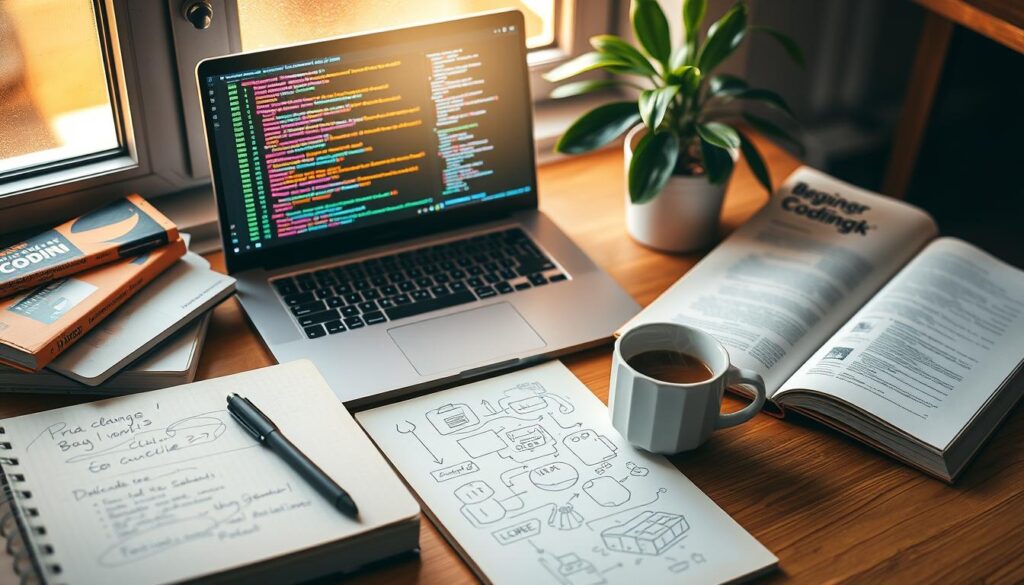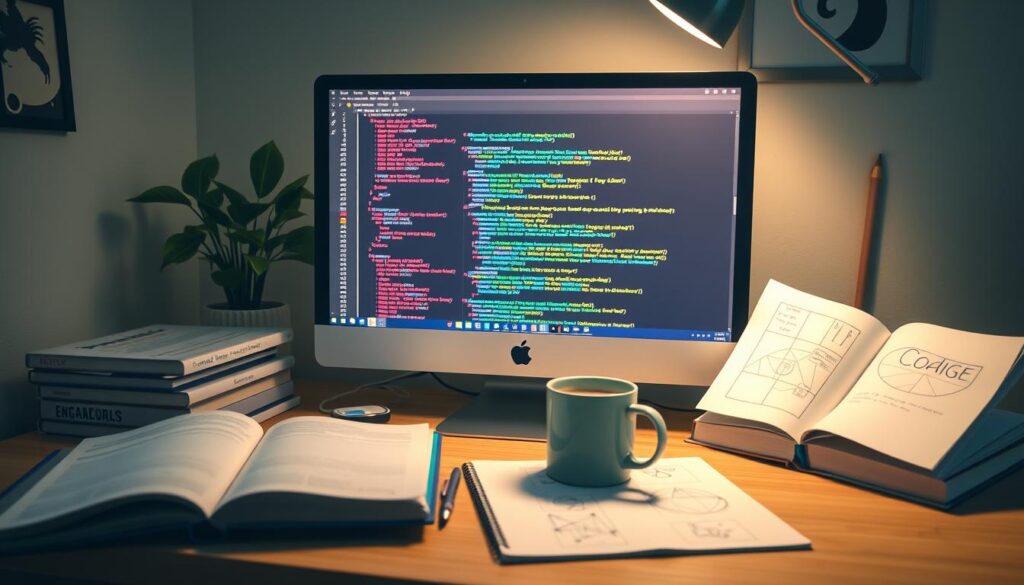Are you ready to start coding but don’t know where to begin? This guide is here to help. It covers the basics of coding for beginners. It’s perfect for students, career-changers, or anyone curious about tech.
Learn the coding fundamentals and set up your coding environment. You’ll get step-by-step coding tutorials. This guide will be your map to the world of intro to coding.
See how coding for kids works and discover your own coding abilities. Dive into the beginner’s guide to coding and learn the basics of coding 101.

Let’s start this exciting journey together. We’ll show you the first steps of entry-level coding. Get ready to open up a world of possibilities and become a confident coder in no time!
Understanding the Fundamentals of Coding for Beginners
Are you curious about coding? It’s a world full of possibilities. Learning to code can open many doors, like making websites or apps.
What is Coding and Why is it Important?
Coding is like writing instructions for computers. It’s what makes our digital world work. It helps us solve problems and make things easier.
As technology grows, so does the need for coders. It’s a valuable skill in many fields.

Learning about coding and languages is exciting. It’s the start of a journey that can change your life. Coding lets you create and solve problems in the digital world.
Setting Up Your Coding Environment
Starting your coding journey means setting up your coding space. You need to install software and tools to write, test, and run your code. It’s key for beginners and those with some coding experience.
Choosing a programming language is a big decision. Python, JavaScript, and Java are good for beginners. After picking a language, you’ll need an Integrated Development Environment (IDE) or text editor like Visual Studio Code or Sublime Text. These tools help you write, debug, and manage your code easily. You might also need to install other tools, like a web server or database management system. Many tools have easy installers to help you.
As you set up, get to know your tools well. Try different settings and options to find what suits you best. With practice and patience, you’ll start coding and enjoy the journey.
Coding for Beginners: A Step-by-Step Approach
In this final section, we’ll explore the core concepts of coding. You’ll learn about variables, data types, and operators. Also, you’ll discover control structures like conditionals and loops.
By the end of this section, you’ll understand coding basics. You’ll be on your way to becoming a confident coder.
Learning the Basics: Variables, Data Types, and Operators
The journey of coding for beginners starts with understanding the building blocks of programming. Variables are like containers that hold data. They let you store and manipulate information.
Mastering different data types, such as integers, floats, and strings, is crucial. It helps with effective data management. Operators, like arithmetic, logical, and assignment operators, enable you to perform various operations on your data.
Control Structures: Conditionals and Loops
As you progress in your programming basics journey, you’ll explore control structures. These are the decision-making and repetition mechanisms in your code. Conditionals, such as if-else statements, allow your program to make decisions based on specific conditions.
Loops, on the other hand, enable you to repeat a block of code multiple times. They are essential for automating tasks and processing large datasets. Understanding these coding fundamentals will empower you to write more sophisticated and efficient programs. If you want to learn coding one of the websites i would recommend is koderbox it has expert teaching staff and very small batch sizes which in turn helps you to learn the basics to advance in depth.
